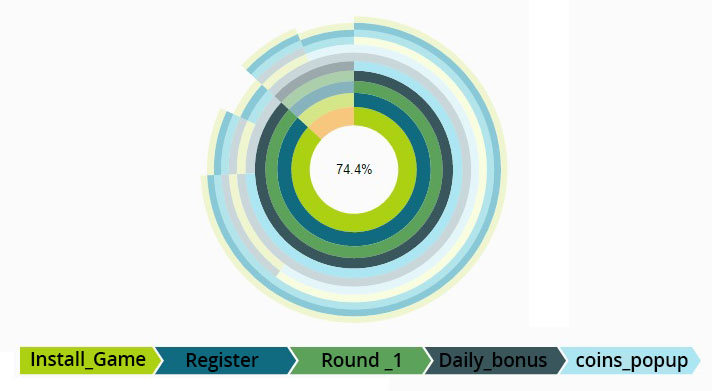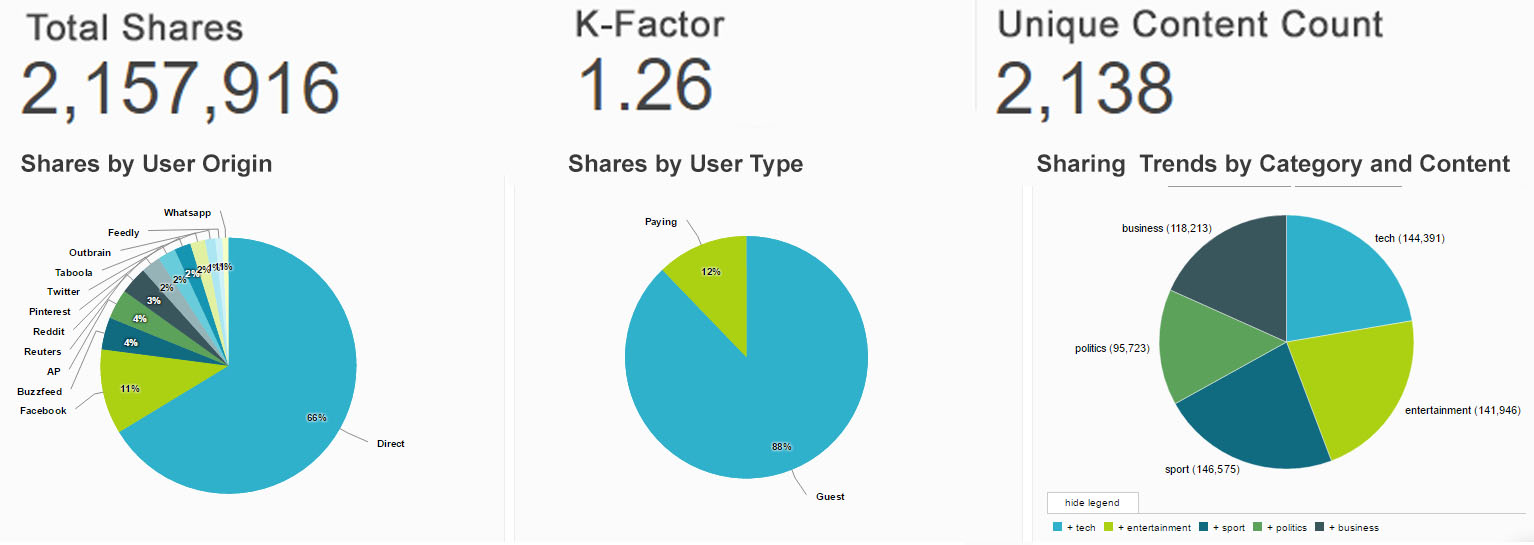It doesn’t matter whether people are ecommerce shoppers, digital news readers, Forex traders or online gamers, they all have one thing in common – they demonstrate digital behavior, whether it’s clicking on a personalized email offer, sharing recommended content, completing demo trading sessions, viewing suggested items from the fashion category and adding them to a wish list, or making a first-time deposit in what will soon become their favorite online game.
Analyzing each user action independently might give you a skewed idea of what it is that your customers do. Digital behavior is more than just a single action in one point in time and should be looked at as a timeline of digital actions that demonstrate patterns. Customer actions, or behavior when analyzed and integrated between different touch points, can shed great insight on customer behavior and facilitate app optimization that will lead to growth.
Online businesses of all types should become more insight-driven to deliver optimized experiences throughout the entire customer journey. After all, whether your customers are gamers, readers, traders or shoppers, it’s a matter of seconds before they lose interest and start browsing the site of the competition. These customers demand an excellent online experience – one that compels them to come back for more.
Understanding eager players vs. dropouts
To convince players to return to a gaming platform, operators have to be able to answer one crucial business question:
Why do some players register and purchase a real-money game quickly while others play a single demo game and dropout?
The answer to this question relies on the gaming operator’s ability to conduct behavioral path analysis. By understanding the path players take within a single session, operators can learn how to optimize player behavior and influence future gamers to become loyal players.
These two path analyses show that, although businesses might think a bonus coupon would incentivize players to continue playing for a bonus round, it can sometimes be a disincentive. Almost 75 percent of players who arrive at the site organically register and then receive a bonus coupon to purchase a real-money game.
Why?

Players who arrive via organic means, as opposed to an ad, could be more familiar with the brand and more interested in investing in a real-money game. The offer of a bonus campaign simply gives them a final nudge in the right direction.
Obsessively sharing the most interesting content
Most content analytics measures the popularity of content, or the numbers of views or shares. But what if you wanted to understand the total effect of sharing that piece of content – i.e. the total numbers of clicks, page views, shares and conversions that were a direct result of those shares?
That’s where measuring content virality comes in handy. Virality, measured using the K-factor, measures the number of invites and invite conversions. Once you are able to see the total number of shares of your content, as well as view them according to different audience segments, content categories, and platform origin, you’ll have a better understanding of which type of content and which social media, affiliate or content site is best for placing your ad dollars.

Understanding past sharing patterns of readers during short timeframes, especially different segments of readers (such as paid readers), gives publishers the ability to predict future consumption in those same short timeframes among similar audience segments. They can then adjust to create specific types of content or market it on channels that have higher virality rates.
From persona profiling to behavioral segmentation
The idea of marketing according to different personas has been around for a while in ecommerce, and as a result, digital marketers are constantly creating campaigns for personas such as mothers, health food lovers and VIP shoppers. But creating marketing campaigns and delivering them according to persona behaviors over a specific period of time is an entirely different story.
It’s the difference between marketing to shoppers who frequently buy baby clothes over their entire customer lifetime and shoppers who bought baby clothes in the last two weeks and spent over $50 on their purchases. Which shopper do you think is more likely to convert?
After creating these behavioral segments, ecommerce businesses can compare the different actions among them to see which is the optimal path for each, or which could be better optimized.
Businesses can also create and save a behavioral segment from a cohort analysis report, using it later for targeted marketing campaigns.
By analyzing past behavior of this group of shoppers, we can gain insights on the present. Did these shoppers engage with the website in the past? Perhaps they had no real intention to continue to purchase from the site, but were after a deal.
Instead of continuing to offer retention campaigns to this segment, ecommerce businesses should optimize the path of these shoppers to encourage more spending, or focus their retention campaigns on other segments that are more likely to produce recurring customers.
An optimal customer experience right from the start
According to IBM research, every day we create 2.5 quintillion bytes of data. Instead of collecting massive amounts of data and then storing and sorting through it to gain insights, data could have greater value if businesses started with a goal in mind. Business owners should ask themselves: What are the goals that I wish to accomplish?
That’s what Fibiz, a fast-growing trading business, did. During their beta launch, their marketing campaigns were quite successful in attracting many users who all traded with virtual money. But they wanted to move onto the next stage of high growth by offering real-money trading, and their goal was to analyze their trader behavior in order to optimize their product for their beta launch.

By analyzing their conversions over time and the steps they took to reach optimal conversion rates, Fibiz learned that traders who completed a tutorial video about different types of trading strategies had a much higher conversion rate than traders who skipped the tutorial. The video gave them the tools and confidence needed to place more frequent and higher value trades.
As a result of these insights, the company optimized their trading app to better engage new traders with the tutorial. Their ability to set a goal and ask critical business questions allowed them to focus on making the right data-driven decisions from a very early stage in their startup.
No matter the industry, the commonality between users is the same. They all demand a deep understanding of their behavior in order to maintain their engagement and prevent them from going to a competitor. What businesses need to keep in mind is that customer behavior isn’t static, but dynamic over time. What they liked yesterday, they might hate today. Businesses need the technology to know the difference.
